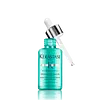What's inside
What's inside
 Key Ingredients
Key Ingredients

 Benefits
Benefits

 Concerns
Concerns

 Ingredients Side-by-side
Ingredients Side-by-side

Water
Skin ConditioningBis-Aminopropyl Diglycol Dimaleate
Skin ConditioningPropylene Glycol
HumectantCetearyl Alcohol
EmollientBehentrimonium Methosulfate
Phenoxyethanol
PreservativeCetyl Alcohol
EmollientGlycerin
HumectantHydroxyethyl Ethylcellulose
EmulsifyingStearamidopropyl Dimethylamine
EmulsifyingQuaternium-91
Sodium Benzoate
MaskingCetrimonium Methosulfate
AntimicrobialCetrimonium Chloride
AntimicrobialParfum
MaskingTetrasodium EDTA
Polyquaternium-37
Benzyl Benzoate
AntimicrobialEtidronic Acid
Ascorbic Acid
AntioxidantPhytantriol
HumectantTocopheryl Acetate
AntioxidantAloe Barbadensis Leaf Juice
Skin ConditioningPanthenol
Skin ConditioningSimmondsia Chinensis Seed Oil
EmollientCitric Acid
BufferingPotassium Sorbate
PreservativeWater, Bis-Aminopropyl Diglycol Dimaleate, Propylene Glycol, Cetearyl Alcohol, Behentrimonium Methosulfate, Phenoxyethanol, Cetyl Alcohol, Glycerin, Hydroxyethyl Ethylcellulose, Stearamidopropyl Dimethylamine, Quaternium-91, Sodium Benzoate, Cetrimonium Methosulfate, Cetrimonium Chloride, Parfum, Tetrasodium EDTA, Polyquaternium-37, Benzyl Benzoate, Etidronic Acid, Ascorbic Acid, Phytantriol, Tocopheryl Acetate, Aloe Barbadensis Leaf Juice, Panthenol, Simmondsia Chinensis Seed Oil, Citric Acid, Potassium Sorbate
Water
Skin ConditioningPolyquaternium-37
Paraffinum Liquidum
EmollientAmodimethicone
Polysorbate 20
EmulsifyingQuaternium-87
CleansingStearyl Alcohol
EmollientMenthoxypropanediol
MaskingBehentrimonium Chloride
PreservativeSafflower Glucoside
Maltodextrin
AbsorbentPropylene Glycol
HumectantCandelilla Cera
EmollientPPG-1 Trideceth-6
Skin ConditioningPropanediol
SolventChlorhexidine Digluconate
AntimicrobialIsopropyl Alcohol
SolventTrideceth-6
EmulsifyingAcrylates Copolymer
Sorbitan Oleate
EmulsifyingPolyquaternium-11
Rose Extract
Skin Conditioning2-Oleamido-1,3-Octadecanediol
Skin ConditioningCetrimonium Chloride
AntimicrobialCamellia Sinensis Leaf Extract
AntimicrobialXanthan Gum
EmulsifyingTocopherol
AntioxidantBHT
AntioxidantSodium Citrate
BufferingParfum
MaskingWater, Polyquaternium-37, Paraffinum Liquidum, Amodimethicone, Polysorbate 20, Quaternium-87, Stearyl Alcohol, Menthoxypropanediol, Behentrimonium Chloride, Safflower Glucoside, Maltodextrin, Propylene Glycol, Candelilla Cera, PPG-1 Trideceth-6, Propanediol, Chlorhexidine Digluconate, Isopropyl Alcohol, Trideceth-6, Acrylates Copolymer, Sorbitan Oleate, Polyquaternium-11, Rose Extract, 2-Oleamido-1,3-Octadecanediol, Cetrimonium Chloride, Camellia Sinensis Leaf Extract, Xanthan Gum, Tocopherol, BHT, Sodium Citrate, Parfum
 Reviews
Reviews

Alternatives
Ingredients Explained
These ingredients are found in both products.
Ingredients higher up in an ingredient list are typically present in a larger amount.
This ingredient is a preservative, antimicrobial, and emulsifier. It is often used in cosmetics for its ability to cleanse, condition, and reduce static.
Cetrimonium chloride is a quaternary ammonium salt, meaning it has a water-soluble structure.
Parfum is a catch-all term for an ingredient or more that is used to give a scent to products.
Also called "fragrance", this ingredient can be a blend of hundreds of chemicals or plant oils. This means every product with "fragrance" or "parfum" in the ingredients list is a different mixture.
For instance, Habanolide is a proprietary trade name for a specific aroma chemical. When used as a fragrance ingredient in cosmetics, most aroma chemicals fall under the broad labeling category of “FRAGRANCE” or “PARFUM” according to EU and US regulations.
The term 'parfum' or 'fragrance' is not regulated in many countries. In many cases, it is up to the brand to define this term.
For instance, many brands choose to label themselves as "fragrance-free" because they are not using synthetic fragrances. However, their products may still contain ingredients such as essential oils that are considered a fragrance by INCI standards.
One example is Calendula flower extract. Calendula is an essential oil that still imparts a scent or 'fragrance'.
Depending on the blend, the ingredients in the mixture can cause allergies and sensitivities on the skin. Some ingredients that are known EU allergens include linalool and citronellol.
Parfum can also be used to mask or cover an unpleasant scent.
The bottom line is: not all fragrances/parfum/ingredients are created equally. If you are worried about fragrances, we recommend taking a closer look at an ingredient. And of course, we always recommend speaking with a professional.
Learn more about ParfumWe don't have a description for Polyquaternium-37 yet.
Propylene Glycol is an odorless, colorless liquid. As a humectant, it helps skin retain moisture. It also aids in delivering active ingredients.
Another role of this ingredient is preventing a product from melting or freezing. Propylene glycol also adds antimicrobrial properties to a product, elongating product lifespan.
This ingredient is considered an organic alcohol and commonly added into both cosmetics and foods.
Those with sensitive skin or conditions may develop a rash when using this ingredient.
Learn more about Propylene GlycolWater. It's the most common cosmetic ingredient of all. You'll usually see it at the top of ingredient lists, meaning that it makes up the largest part of the product.
So why is it so popular? Water most often acts as a solvent - this means that it helps dissolve other ingredients into the formulation.
You'll also recognize water as that liquid we all need to stay alive. If you see this, drink a glass of water. Stay hydrated!
Learn more about Water